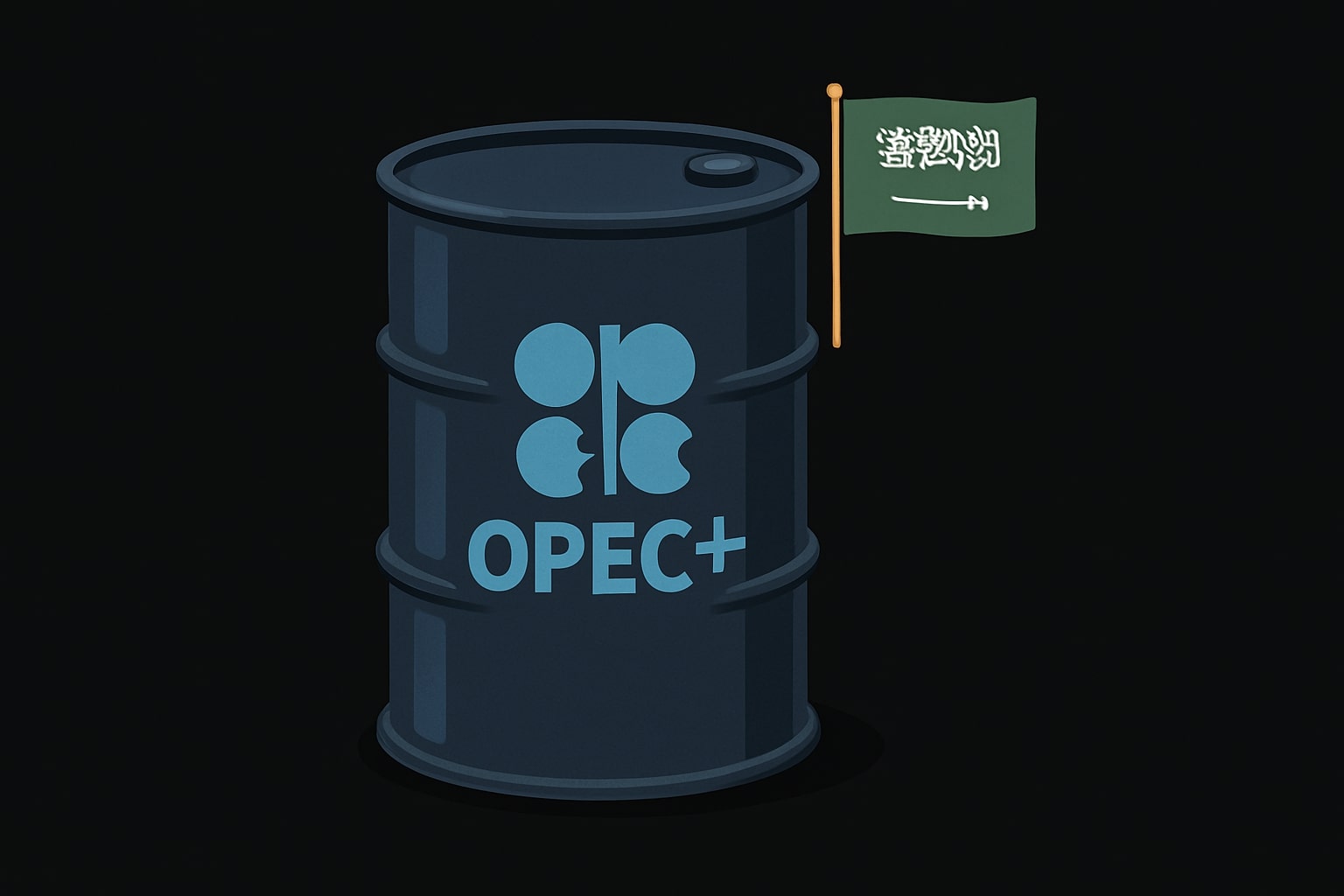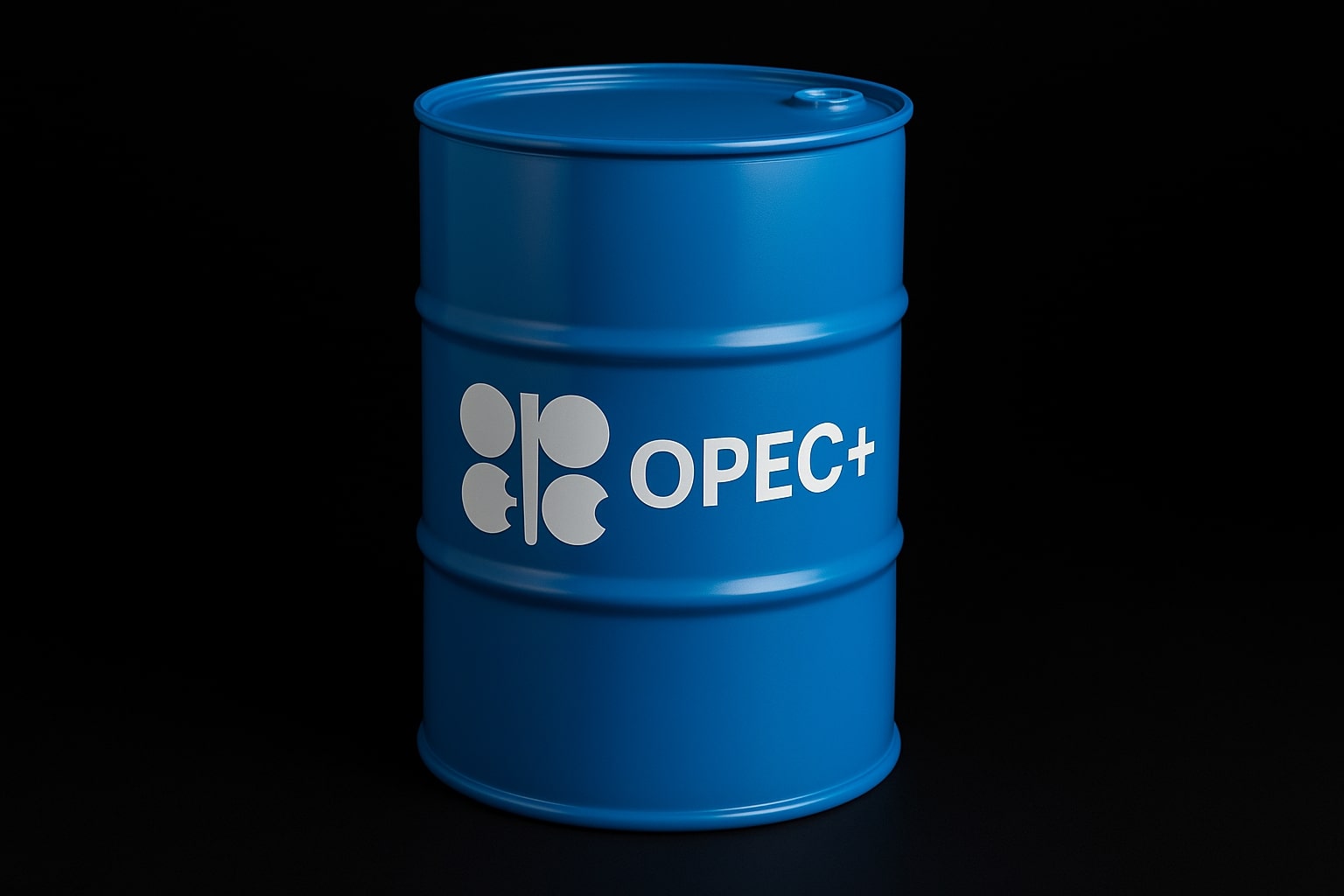
WTI Near $63—Saudi Deficit Swells, Brent Breakout Fades. What’s Next for Oil?
Will WTI (CL=F) break above $65 or sink further as Saudi Arabia slashes spending and OPEC+ stalls? | That's TradingNEWS
Saudi Arabia’s Budget Crisis Tightens Grip on Oil Policy
Saudi Arabia is facing a serious fiscal squeeze as Brent (BZ=F) slips to the low $60s and WTI (CL=F) stalls around $62.92. The Kingdom reported a $15.6 billion deficit in Q1, already over half of its annual forecast. With oil far below the $90 per barrel break-even needed to balance its books, Finance Minister Al-Jadaan admitted that major capital projects like NEOM could be delayed. The Kingdom is covering deficits via debt markets rather than touching foreign reserves, a sign of growing pressure. While officials insist they’re prepared for multiple scenarios, the reality is stark—sub-$70 oil forces painful choices in spending.
OPEC+ Output Limits Strain Under Global Demand Uncertainty
OPEC+ continues holding the line on production, but it’s no longer moving markets. Despite Saudi efforts, the expected floor from supply cuts hasn’t materialized. Rystad Energy challenged the narrative of oversupply, projecting 600,000–700,000 bpd demand surplus from May to August. But even with those numbers, WTI struggles to stay above $63, and Brent barely holds $65. No new cuts are expected for July, keeping traders in limbo.
Libya and Venezuela Disruptions Not Enough to Jolt Oil Higher
Libya’s eastern government threatened force majeure at key export terminals due to clashes near Tripoli. NOC denied the disruption, but traders are watching closely. Venezuela’s outlook darkened with Chevron's restricted exports and 800 job cuts in Texas, part of broader shifts. However, neither event has shaken pricing. Russian oil continues flowing despite new U.S. sanctions—proof that headlines alone won’t shift the supply curve anymore.
Technical Signals: Brent Eyes $66.59, WTI Tests $63.86
The charts hint at upside, but without momentum. WTI broke out of a bullish Gartley and climbed past $61.63 (50-day EMA) and $61.43 (200-day EMA) to hit $62.92, targeting $63.22 and $63.86. Still, volumes show tepid conviction. Brent pierced $65.33 resistance and bounced off $64.28, aligning with the 50/200 EMA confluence. Price could stretch to $66.11 or $66.59, but it needs a fundamental driver.
U.S. Court Blocks Trump Tariffs—Oil Reacts, But Gains Fragile
A U.S. trade court struck down Trump-era tariffs, declaring them unconstitutional. That move briefly lifted Brent to $65.68 and WTI to $62.63, but the gains didn’t last. Analysts saw it as a short-term tailwind—not a reversal. Without real shifts in supply/demand dynamics, optimism is capped.
Investor Positioning: Hesitant Accumulation, No Breakout Yet
Traders are positioning cautiously. Repeated rejections below $63.86 (WTI) and $66 (Brent) suggest rangebound behavior. Volume builds on dips, hinting at quiet accumulation. Technical buyers await a close above $65 WTI or $68 Brent to trigger real momentum. Until then, the market’s tone remains defensive.
Verdict: HOLD – Rangebound Until a Catalyst Emerges
Oil remains boxed in. Saudi deficits, Libya tensions, and technical breakouts offer bullish potential—but global demand worries and OPEC+ inaction keep ceilings intact. Expect WTI to churn between $61–$65, and Brent between $64–$67. Without a fresh supply shock or deeper OPEC+ cuts, there’s no clear reason to go long or short. For now, HOLD is the only rational move.
That's TradingNEWS
Read More
-
BITQ ETF Soars 66.55% as Bitcoin Blasts Past $124,000 — Crypto Equities Lead 2025 Rally
13.10.2025 · TradingNEWS ArchiveStocks
-
XRP ETFs XRPR, XRPI Slip as Ripple XRP-USD Holds $2.62 — SEC Fast-Track Could Ignite $20B
13.10.2025 · TradingNEWS ArchiveCrypto
-
Natural Gas Price Forecast - NG=F Steadies at $3.00 as U.S. Export Boom Tests Old Fields
13.10.2025 · TradingNEWS ArchiveCommodities
-
USD/JPY Price Forecast - Dollar to Yen Climbs to ¥152.28 as Japan’s Political Shakeup
13.10.2025 · TradingNEWS ArchiveForex



















